No products in the cart.
Return To Shop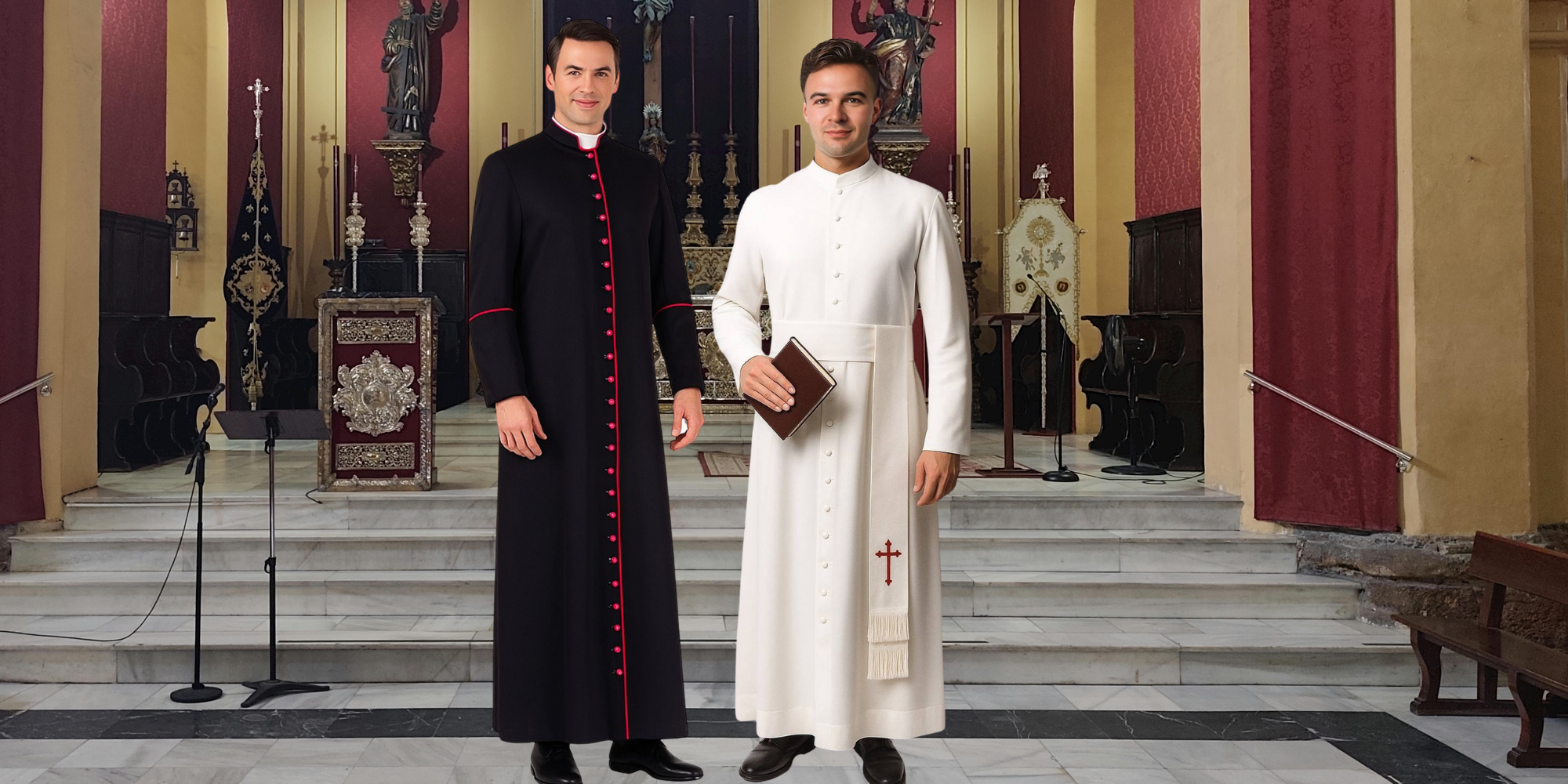
The Catholic priest outfit is one of the most recognizable and meaningful forms of ecclesiastical clothing in the world. Every priest, whether newly ordained or experienced, relies on a combination of a Catholic priest cassock and a Catholic priest robe to fulfill both functional and spiritual roles. These garments are not merely ceremonial; they carry centuries of tradition, symbolism, and practical design that reflect the sacred responsibilities of the clergy.
From Roman Catholic vestments to modern adaptations, understanding why every Catholic priest outfit includes these essential pieces provides insight into religious symbolism, liturgical purposes, and clergy attire for mass. This comprehensive guide will explore the historical, spiritual, and practical significance of Catholic clerical attire, ensuring that clergy and laity alike appreciate the depth behind the sacred dress.
The Historical and Spiritual Significance of the Catholic Priest Outfit
The Catholic priest outfit has evolved over centuries, rooted in the traditions of the early Church. Originally, priests wore simple garments resembling everyday clothing of the time, which gradually transformed into the more distinct Catholic clerical attire we recognize today. The combination of the Catholic priest cassock and Catholic priest robe serves as a visual representation of authority, devotion, and commitment to God.
Biblical references support the importance of sacred clothing. In Exodus 28, God instructs Moses to have Aaron and his sons wear specific priestly garments when performing sacred duties, emphasizing that attire is not merely decorative but a spiritual symbol:
“They shall make holy garments for Aaron your brother, for glory and for beauty.”
(Exodus 28:2, ESV) Similarly, in Hebrews 7:26, the priesthood is described as holy and dedicated:
“For such a high priest was fitting for us, holy, innocent, unstained, separated from sinners, and exalted above the heavens.”
The cassock became a central feature of traditional priest clothing, symbolizing humility, dedication, and service. Over time, robes were added to enhance ceremonial presence, especially during high masses, sacraments, and important liturgical events. Church vestments and clergy apparel were carefully crafted to distinguish priests from the laity and communicate the sacred nature of their duties. Modern Catholic priest outfits continue to reflect these historical and spiritual roots. While materials and styles have adapted for comfort and practicality, the fundamental design principles remain unchanged, ensuring that every priest outfit maintains its symbolic and functional integrity.
The Catholic Priest Cassock: A Timeless Symbol of Devotion
The Catholic Priest Cassock stands as one of the most iconic and enduring elements of clergy attire. Far more than just a piece of clothing, it embodies centuries of tradition, discipline, and spiritual dedication. Worn daily or under ceremonial robes, the cassock is a visible reminder of a priest’s commitment to a life of service, humility, and devotion to God. Its simple elegance hides profound meaning and purpose, making it both a practical garment and a sacred symbol.
Design Features and Variations
The cassock’s design reflects a careful balance between tradition, practicality, and symbolic meaning:
- Length and Fit: Traditionally ankle-length, the cassock ensures modesty while allowing the priest to move freely during Mass, sacraments, and other clerical duties. The tailored fit emphasizes dignity without hindering physical activity.
- Buttons and Cincture: Rows of buttons running from the collar to the hem symbolize discipline, structure, and order, core virtues of the priestly life. The cincture or sash, tied at the waist, represents chastity, spiritual readiness, and a visible sign of commitment to the priesthood.
- Color and Trim Variations: While black remains the standard color for everyday wear, cassocks can feature colored piping or trims to signify rank or liturgical occasions. For instance, bishops may wear purple piping, cardinals’ red, and the Pope’s cassock is traditionally white. Some ceremonial cassocks may also include subtle embroidery or lining that reflects ecclesiastical heritage.
The cassock is not merely functional; it is a daily affirmation of faith and vocation. Its origins trace back to the early Church, where clergy wore long tunics to signify a life set apart for spiritual service. Over the centuries, the cassock evolved to represent authority, humility, and a visible connection to centuries of Church tradition.
Wearing a cassock daily helps priests maintain a sense of spiritual discipline, reminding them and the community of their sacred responsibilities. In essence, it serves as both a personal and public testament to their dedication, separating the priest visually from the laity while highlighting their role as spiritual guides.
Practical Considerations for Modern Clergy
Modern cassocks combine tradition with contemporary practicality:
- Comfortable Fabrics: Breathable materials are now used to ensure comfort during long services, outdoor ceremonies, or travel. Lightweight blends prevent overheating while maintaining the cassock’s dignified appearance.
- Functional Features: Many modern cassocks include hidden pockets, adjustable belts, or reinforced stitching to support daily wear and practicality without compromising traditional aesthetics.
- Adaptability: Today’s cassocks are available in styles suited for various climates and activities, from daily pastoral duties to formal liturgical functions.
The Importance of the Catholic Priest Robe
Over the cassock, priests wear a Catholic priest robe, often called a chasuble during mass. These catholic priest robes are visually striking and carry deep liturgical significance. They are designed to communicate the solemnity of sacred rituals and highlight the priest’s spiritual authority.
Selecting the Right Priest Robe:
- Liturgical Colors: White and gold for celebrations, red for martyrs and Pentecost, purple for Advent and Lent, and green for Ordinary Time.
- Material: Silk blends, satin, or breathable fabrics ensure comfort during long ceremonies.
- Design: Embroidery, gold trim, or bishop-style sleeves enhance ceremonial grandeur.
- Fit: Must layer over the cassock comfortably, maintaining a polished and dignified appearance.
Catholic priest robes complete the priest outfit, visually communicating sacred tradition while providing functional comfort. Church priest robes and priest robe outfits have been refined over centuries to balance symbolism, aesthetics, and usability.
The Catholic Church emphasizes that sacred vestments are not merely decorative. They signify a priest’s role as mediator between God and the people, and the robe reminds both clergy and congregation of the sacred mission entrusted to ordained ministers.
Harmonizing Cassocks and Robes for the Perfect Priest Outfit
A truly distinguished Catholic priest outfit achieves its full impact when the cassock and robe are thoughtfully combined with appropriate accessories and ceremonial elements. This harmonious assembly not only upholds centuries of liturgical tradition but also conveys authority, devotion, and professionalism. By carefully coordinating each piece, priests can present a visually cohesive appearance while remaining fully equipped for their spiritual duties.
Tips for Creating a Complete Priest Ensemble
- Start with the Cassock: Begin with a well-fitted, high-quality Catholic clergy cassock that maintains the traditional design and color, serving as the foundation of the outfit.
- Layer with a Robe: Choose a Catholic priest robe that matches the liturgical season and ceremony. The robe elevates the outfit, symbolizing purity, devotion, and sacred authority.
- Incorporate Accessories: Add stoles, cinctures, crosses, or other ecclesiastical accessories. These not only enhance visual appeal but also communicate spiritual symbolism and hierarchy.
- Select Appropriate Footwear: Polished black shoes or formal clerical footwear complete the look, ensuring the outfit remains professional and functional throughout ceremonies.
- Maintain Garments Carefully: Clean, pressed, and well-maintained attire reflects respect for tradition, sacred rituals, and the community being served.
The Spiritual and Visual Impact
When these elements are thoughtfully combined, a Catholic priest outfit becomes more than clothing, it is a visual testament to faith, discipline, and sacred responsibility. The interplay of cassock, robe, and accessories creates a cohesive, dignified, and spiritually resonant appearance that commands respect while honoring centuries of clerical tradition.
Conclusion
Every Catholic priest outfit relies on a cassock and robe, forming a complete ensemble that conveys spiritual dedication, ceremonial respect, and centuries of tradition. These garments are deeply rooted in biblical teachings and ecclesiastical history, reinforcing the priest’s role as a mediator between God and the congregation. By understanding the symbolism, liturgical relevance, and practical aspects of these garments, clergy can dress with confidence, honor sacred customs, and maintain a professional appearance. Sacred vestments, inspired by Scripture and tradition, serve as daily reminders of the priest’s calling and responsibility.
Explore high-quality Catholic priest outfits from Holy Clergy to elevate your ministerial wardrobe with attire that blends timeless tradition, biblical significance, and modern craftsmanship.
Frequently Asked Questions (FAQ’s)
What is a Catholic priest’s robe called?
A Catholic priest’s robe is commonly referred to as a chasuble when worn during mass, though generally, it is also called a Catholic priest robe. It is worn over the cassock and symbolizes the priest’s sacred role.
What does the Catholic cassock symbolize?
The cassock symbolizes humility, devotion, and the priest’s lifelong commitment to God. It visually represents the priest’s sacred authority and spiritual vocation.
What does a priest cassock look like?
A priest cassock is a long, fitted garment, traditionally black, with buttons down the front. Many cassocks feature 33 buttons representing the years of Jesus Christ’s life, adding symbolic depth.
What is a Catholic priest’s outfit called?
The combination of a Catholic priest cassock and a Catholic priest robe forms the traditional Catholic priest outfit, a complete ensemble rooted in centuries of Roman Catholic tradition.
What do the colors of Catholic priest robes mean?
Liturgical colors carry symbolic meanings: white/gold for celebrations, red for martyrs/Pentecost, purple for Advent, Lent, and green for Ordinary Time, each reflecting specific spiritual themes.
Can I order online from Holy Clergy?
Yes! Holy Clergy provides high-quality Catholic priest cassocks, robes, and accessories online. To browse and order priest outfits that combine tradition, comfort, and professional style.

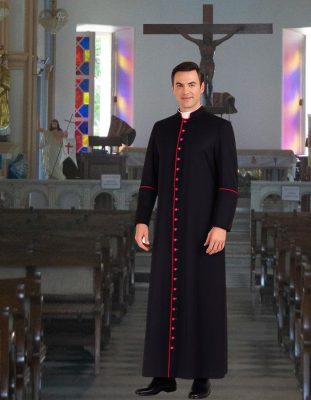
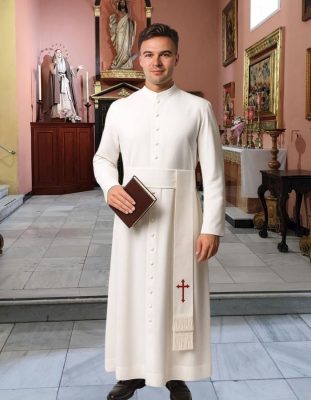


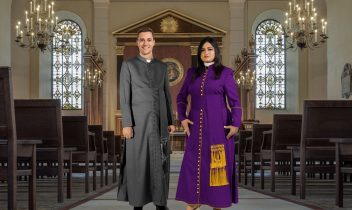
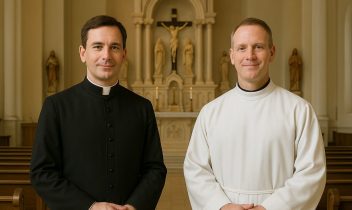
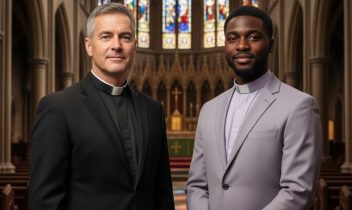
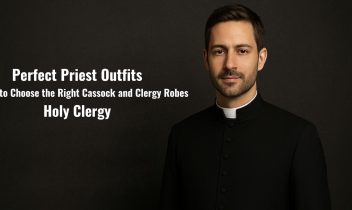
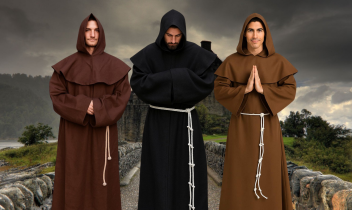
Recent Comments